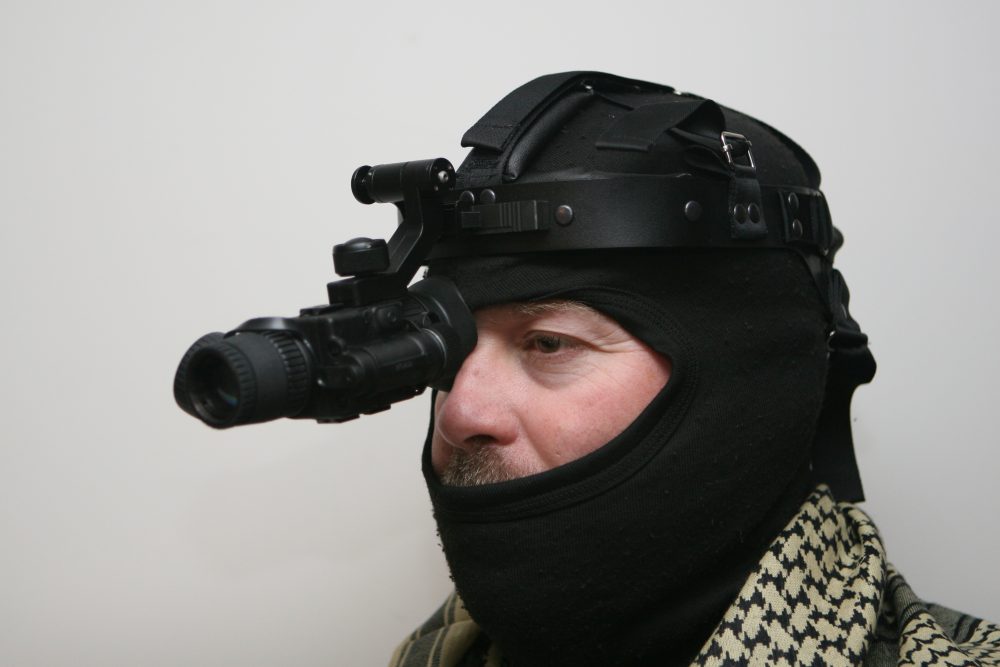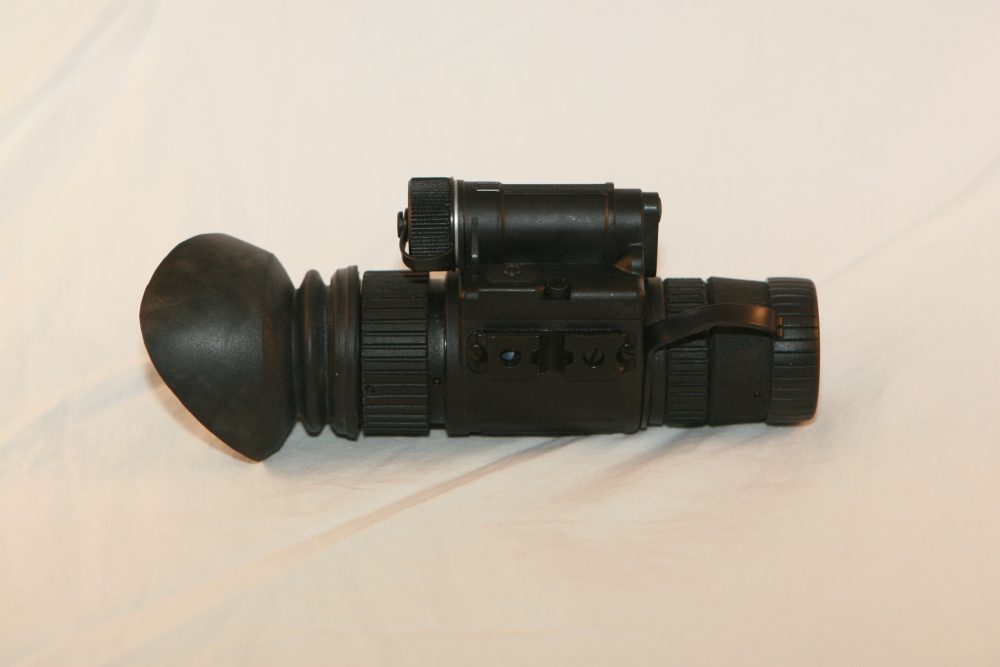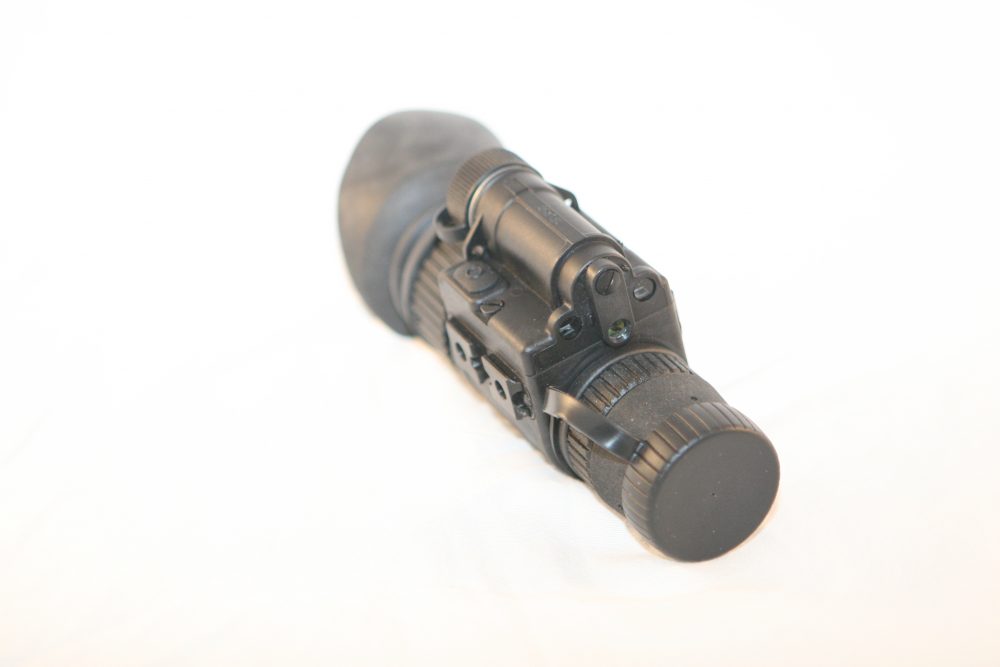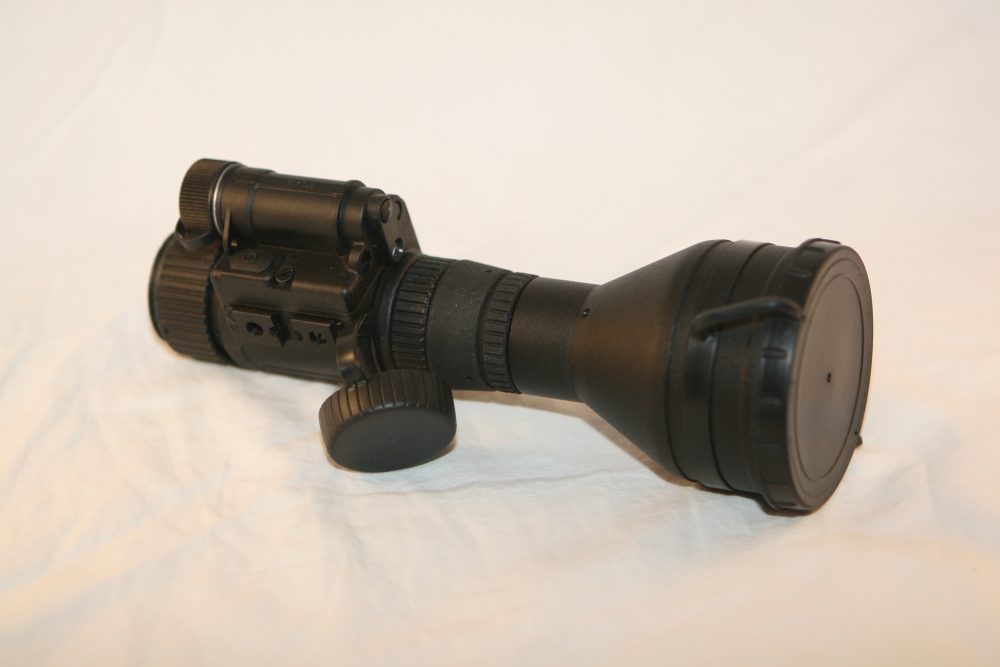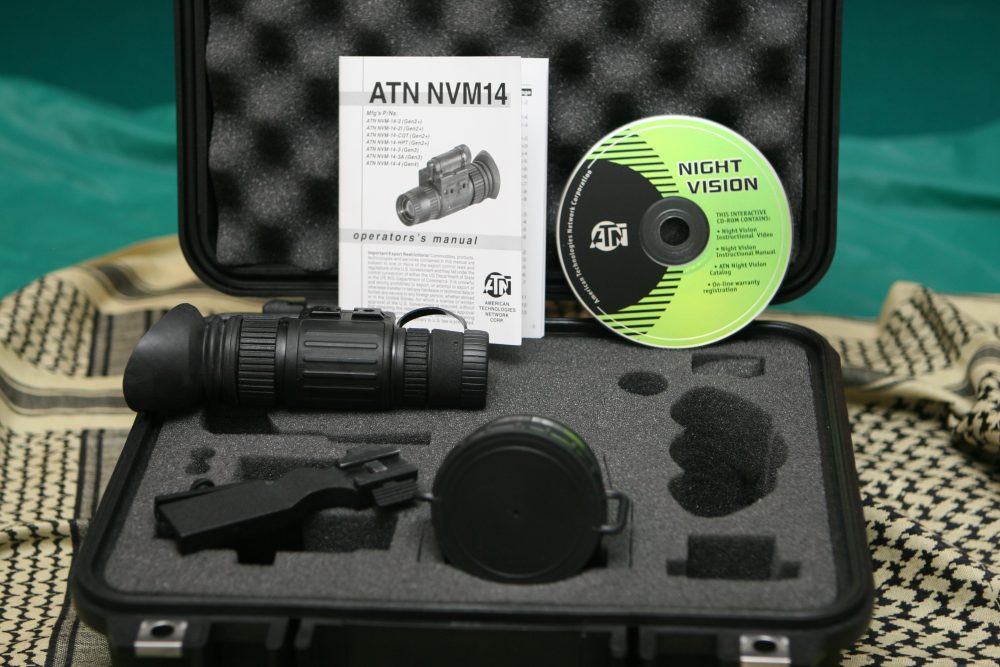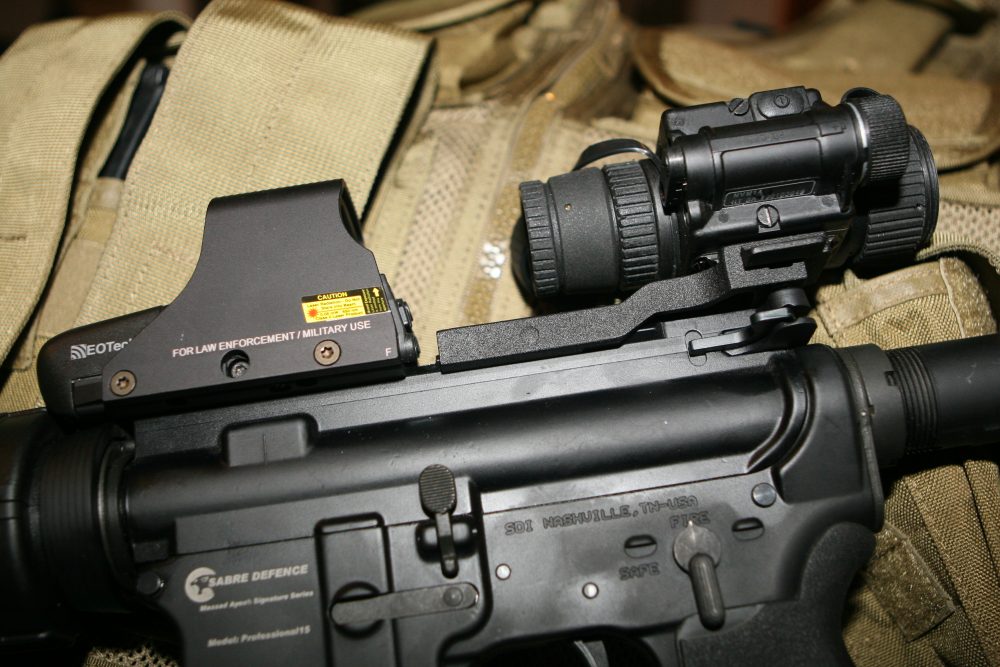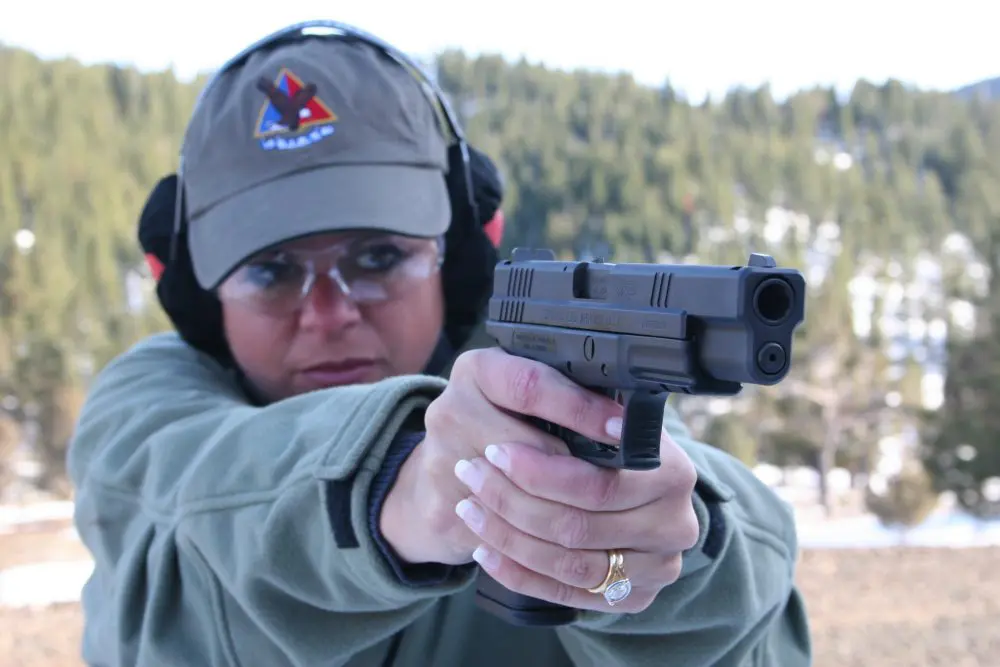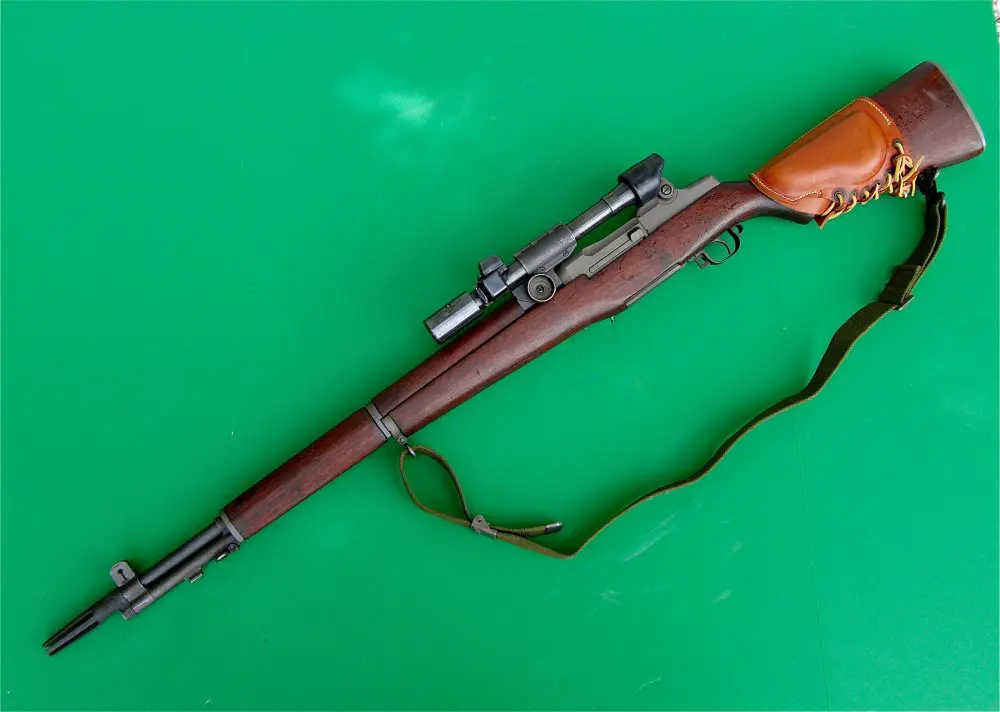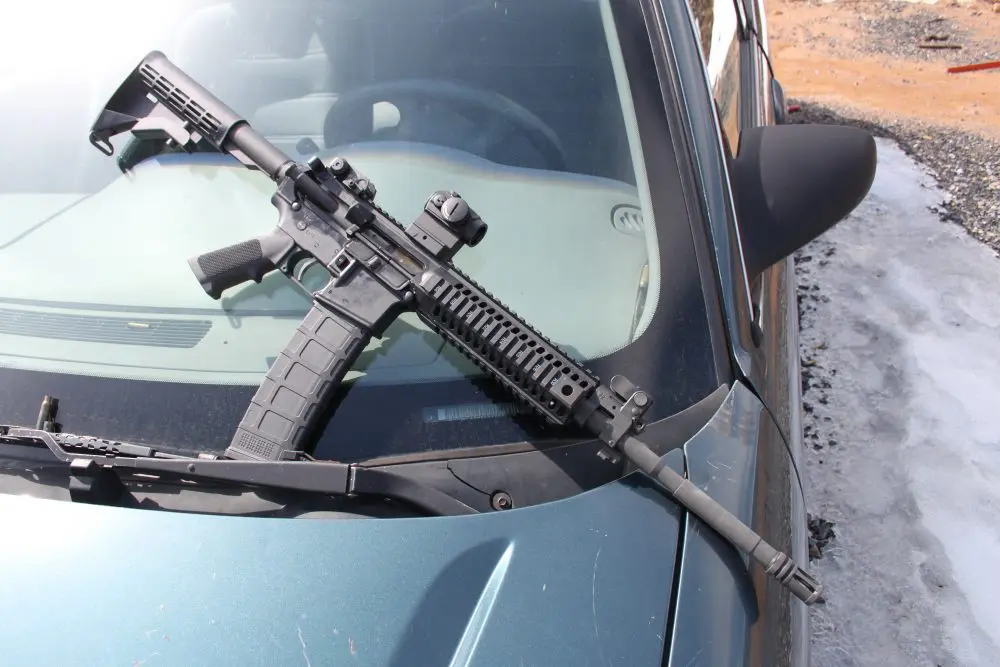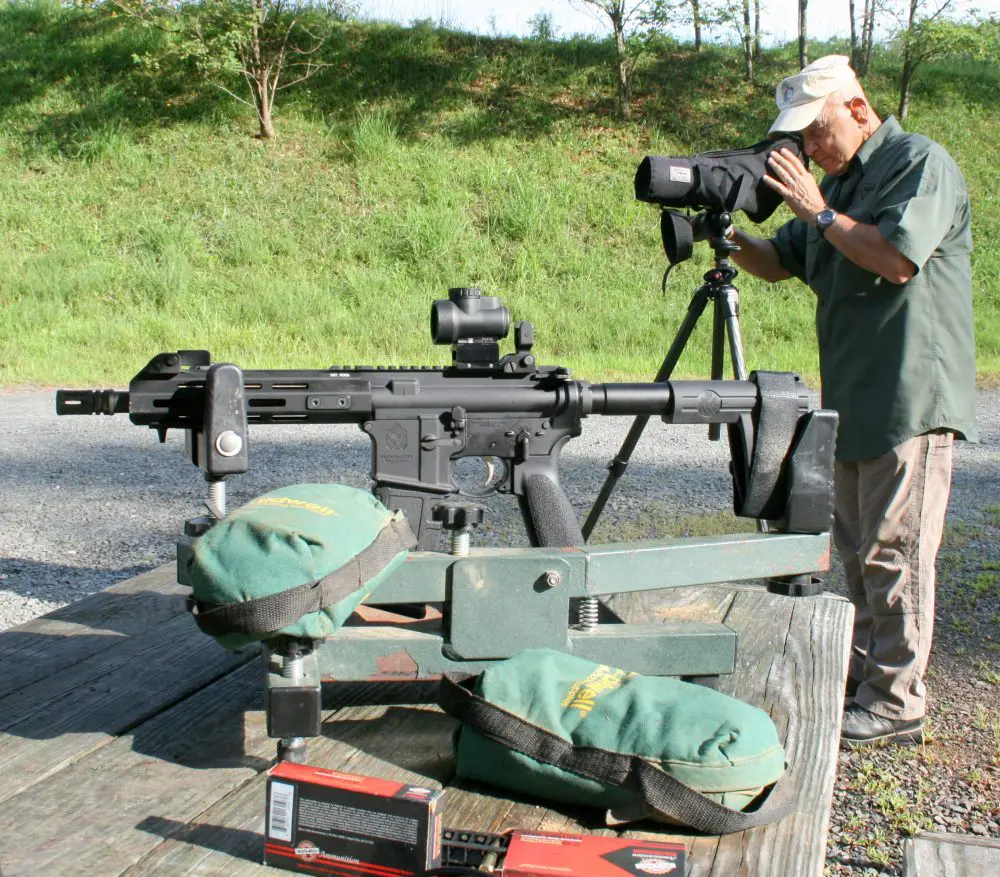Ignorance is bliss. What am I talking about? I had no idea what I was missing in terms of night vision capability or availability until my exploration of products from American Technologies Network Corp. (ATN).
ATN produces one of the most diversified line-ups of night vision (NV) devices in the industry. ATN offers many other optical devices beside NV, such as scopes, binoculars, reflex sights, laser range finders, thermal viewers and other specialized optics. Any conceptions I held of tactics, personal defense, or prudent countermeasures in terms of equipment have been redefined—both on an individual level and for law enforcement or defense agency applications.
Night vision always seemed beyond my reach either for reasons of economics, more pressing equipment needs, and upon reflection, a lack of understanding of its capabilities. I admit to having held certain perceptions regarding night vision gear. There are times when one must get past the novelty of an item to truly appreciate its significance.
ATN NVM-14-3A is surprisingly compact. The on/off and infrared illuminator (IRI) switch is visible below the IRI tube. This is the only switch needed to activate the unit. The knurled knobs are the diopter and focus controls. The rail shown is one of two mounting points on the NVM-14-3A that allows it to be attached to the weapon mount or hands-free head mount.
I am familiar with night vision terminology labeling equipment by First, Second, Third and Fourth Generation based on technology level. I do grasp what an important advantage it has given U.S. forces on the battlefield. The eye opener for me was the benefits modern night vision gear can bring not only to law enforcement, but private citizens as well. Darkness is when crime and violence predominantly happen.
In this article I will discuss the multi-purpose, utilitarian ATN NVM-14-3A monocular that brought about this awakening. Let’s establish a base line of understanding before getting into the specifics of the ATN NVM-14-3A device.
There are references to night vision development near the end of World War II. However, generally, the night vision equipment used in the Vietnam War is considered the birth of night vision gear and is labeled Generation 1. As with any devices related to electronics, the age of the computer and the shrinking microprocessor have allowed for quantum leaps in technology and size reduction since the 1960s.
I do not want to dwell too much on the scientific aspects of the technology, because quite frankly I am not qualified to do so. In general, night vision devices work by gathering existing ambient light, whether this is moonlight, starlight, or infrared intensifiers. The ambient light made up of photons passes thru a photocathode tube that changes the photons to electrons. The electrons are amplified via chemical and electrical processes and pass through a phosphorus screen that changes the amplified electrons back into visible light, which you can view through the eyepiece. Designers chose to broadcast the image in green because green is the color that the human eye can tell the most variations or shades of. This basic description defines First Generation night vision devices.
Infrared illuminator (IRI) sits atop the unit and is activated by holding down the on/off switch for two seconds. The hinged intensifiers swing up in front of the IRI to concentrate its beam.
The succeeding generations of night vision come into play by how the above process is handled or improved upon. As typical with technology, there is a cost increase associated with any increase in capability. Second Generation night vision improves on First Gen by adding a micro-channel plate (MCP). The MCP amplifies the electrons to a higher level, generating a better quality image for the user. Third Generation night vision technology is achieved by adding a sensitive chemical—gallium arsenide—to the photocathode, again achieving a brighter, clearer image. Also, tube life is improved in Generation 3 units by adding an ion barrier film. Generation 3 devices are considered so technologically advanced that exporting Gen 3 night vision equipment from the U.S. without a valid export permit issued by the State Department is strictly prohibited. Generation 4, also known as Filmless & Gated image intensifiers, are exclusively military in nature at this point and beyond the realm of this discussion in terms of price and availability. Generation 4 devices, obviously, are not available for export.
The ATN NVM-14-3A is a general-use monocular that can be adapted to fit various roles, including a weapon sight, and can be attached to headgear for hands-free observation or merely secured around the neck with a lanyard for use when held to the eye. I feel fortunate that my first exposure was with this general-purpose unit, as it allowed me to explore many different facets of night vision use. The ATN NVM-14-3A proved quick to get into operation with controls ergonomically placed for use. The ATN NVM-14-3A can utilize either a CR 123A or single AA battery for a power source, with the CR 123A providing up to 40 hours of continuous use. I was surprised by the compact size of the ATN NVM-14-3A, which weighs only 11 ounces and is 5.5 inches long, 2 inches wide, and 3 inches high.
3X Afocal lens attached to the front of the NVM-14-3A doubles both the size and weight of the unit. It is best suited for stationary surveillance needs.
The ATN NVM-14-3A has both a focus and diopter adjustment rings that allow the user to dial in optimum settings for best viewing. The ATN NVM-14-3A has a 40 degree field of view. Effective viewing distances depend greatly on conditions and how much clarity or detail is required. There is a difference between detection versus recognition range. Generally speaking, on a clear full-moon night, the NVM-14-3A can detect a man size object at over 300 yards, with a recognition range of 250 yards. The ranges, respectively, would be 150 yards and 100 yards for Gen 1 and 200 yards and 150 yards for Gen 2 devices. Any listed detection or recognition ranges will depend greatly on the size of the viewed object and ambient light conditions.
This is not a technical primer, but users should be aware there are two main quality parameters that night vision devices are measured by—Signal to Noise Ratio (SNR) and Resolution. This is important for comparison’s sake between different product types and/or manufacturers. An informed user will be better able to choose the night vision device best suited to their needs. Resolution is defined as the ability of a night vision system to distinguish between objects close together. Image intensifier resolution is measured in line pairs per millimeter (lp/mm). SNR is a measure of the light signal reaching the eye divided by the perceived “noise” as seen by the eye. A tube’s SNR determines the low light resolution of the image tube. A high SNR translates into the tube’s better ability to resolve objects with good contrast under low-light conditions. Many experts in the field feel the SNR is the best indicator of an image intensifier’s performance because SNR is directly related to the photocathode’s sensitivity and accounts for phosphor efficiency and MCP operating voltage. The U.S. military standard for Resolution is 64 lp/mm and the SNR standard is 20. The ATN NVM-14-3A complies with these standards. Can I perform laboratory tests to validate this? No, but if you do not trust your chosen manufacturer to provide accurate data, you should be looking somewhere else anyway.
Pelican case comes nicely formed around the NVM-14-3A and its different components. An instruction manual and DVD are also included.
The NVM-14-3A turns on and off with a simple push switch that also serves to activate the infrared illuminator (IRI) when depressed and held for two seconds. The NVM-14-3A is a Generation 3 device utilizing a passive system of observing light. By passive, I mean it magnifies existing ambient light without have to induce its own infrared light. However, sometimes there just is not enough ambient light for use. Thus, the ATN NVM-14-3A includes an IRI for such occasions. ATN is an industry leader in providing an IRI on its night vision devices.
For example, the IRI was a must when testing out the unit in a room without windows. Another sound application would be for reading a map within a vehicle or needing to observe something at close range with high clarity or attention to detail. The ATN NVM-14-3A features a focusing lens for the IRI that can be slid into place to concentrate the effect of the IRI even more. The IRI is invisible to the naked eye, but will show itself to any other night vision devices in the area. The IRI’s intended viewing range is ten feet. This range is extended to 25 yards when the focusing lens is moved into place. If a more intensive infrared source is required, ATN offers a separate IRI device called the IR-450 IR illuminator. One’s tactical situation will warrant the use of the infrared illuminator.
ATN NVM-14-3A mounted behind an EOTech on a Sabre Defence AR-15. Verification that the EO Tech or other type of red dot sight is night vision compatible is crucial.
All ATN day/night systems are shipped in milspec, foam inlaid, watertight, unbreakable Pelican cases. The multi-use capability of the ATN NVM-14-3A is apparent upon opening the Pelican case. My unit shipped with a neck lanyard, headmount assembly that allows for hands free use, a 3X Afocal lens, CR 123A battery, and a weapon mounting rail adapter. Also included in the hard case is a detailed instruction manual along with an informational DVD. ATN night vision products come with a minimum two-year warranty, with some models covered for three years. Camera or camcorder adapters are available, as is a 5X Afocal lens. An IR-450 IR illuminator, an adapter for combining the NVM 14-3s into binoculars, a helmet mount, a Picatinny rail adapter and a scope mount adapter are other options. All of these options allow the ATN NVM-14-3A to be configured into whatever role is desired by the user.
The ATN NVM 14-3A combined with the headmount proved my favored set up. The headmount has adjustability in the mounting bracket, allowing the ATN NVM-14-3A to be placed in front of either eye and at the correct eye relief distance. One must be aware that the ATN NVM-14-3A is a general-purpose unit. My experience with the unit and its speed of how it focuses/processes light will dictate that the user move at a walk. Quick focusing on different planes of sight—near and far—is not practical. Thus, driving or rapid tactical movements are problematic and best suited for other night vision devices.
The headmount’s hands-free capability gives the user a greater ability to move while using the ATN NVM-14-3A versus holding the unit to one’s eye as a strict monocular. This also allows the user to carry a weapon or other equipment while taking advantage of “seeing in the dark.” I experimented with using a pistol and rifles with open sights and found that the same issue with focusing at two separate distances limited usefulness. Point shooting is still a valid option, however, depending on distance to target.
ATN NVM-14-3A used in conjunction with the hands-free head mount. This gives great flexibility to a user performing first aid or moving slowly around a perimeter.
Do not get me wrong—use as a monocular hung around your neck for surveillance can be done, especially in an area where ambient light is plentiful, for example, in a city or residential area where light sources are abundant. My thoughts here gravitate to any sort of surveillance or search operation in a populated area. Another likely use would be a home or property owner needing to sweep an area for two- or four-legged intruders. Search and rescue operations are another application suitable for the monocular. That is the beauty of the ATN NVM-14-3A—its versatility. An important feature incorporated into the ATN NVM-14-3A is the Automatic Brightness Adjustment System, which keeps the brightness level constant. In conjunction with this, the unit has an Automatic Protective System control, which will shut the ATN NVM-14-3A down if an overly powerful light source turns on. This protects the unit from “frying” out its sensitive light gathering and magnifying components.
The optimal weapon set-up would be to place the ATN NVM-14-3A behind a red dot or reflex sight (also known as a collimated dot sight) with the weapon mounting rail. It is important to verify that whatever type or manufacturer of sight selected has an NV mode that allows the ATN NVM-14-3A to view the infrared aiming point. This combination of the ATN NVM-14-3A with a red dot or holo sight mounted on an AR-15 or submachine gun platform shows off the versatility of the sight.
I specifically mention AR-15 or submachine gun for two reasons. One crucial consideration is eye relief. The ATN NVM-14-3A’s eye relief of less than one inch makes it not so user friendly mounted behind a scope on a high-powered rifle with significant recoil. There are other night vision products that will perform better in this role. The second consideration is that these weapon platforms have the required length of Picatinny rail for using a red dot sight and ATN NVM-14-3A in conjunction with each other.
I mentioned earlier that the ATN NVM-14-3A as received came with a 3X Afocal lens. One important nuance in using the 3X Afocal is that it does not increase the distance you can see, but rather magnifies the images within a particular NV unit’s range. This is an important concept to grasp. How fast light transmits through the tube determines how much light is available for viewing. More light transmitted translates into more clarity and greater range for an NV unit. The speed of a lens is listed under the F-stop heading in the specs. This is another handy fact to know when comparing different makes and models of NV gear.
The lower the F-stop quantity, the faster the lens processes light. Generally speaking, with glass quality being equal, the higher the magnification, the higher the F-stop, thus the 3X lens will not give you more distance because it is not as bright as the standard 1X lens. The 3X Afocal is a mission-specific option that would be used on the ATN NVM-14-3A for surveillance or other static roles. The 3X Afocal is straightforward to employ. It merely screws onto the front of the existing 1X lens—a nice option to have that only contributes more to the ATN NVM-14-3A’s versatility.
The greatest compliment I can pay the ATN NVM-14-3A is that I now regard it as a vital piece of equipment for both private citizens and law enforcement. My earlier perceptions of NV devices being mere gadgets for “civilians” have been demolished. In terms of law enforcement, NV devices are a must, no matter the size, location or mission of an agency or unit. Generation 3 technology is not inexpensive, with the ATN NVM-14-3A carrying a suggested retail just under $3,000. However, earlier Generation monoculars are available for significantly less cost. I cannot stress how impressed I was with the unit and its capabilities.
Do I expect mass numbers of private citizens or even law enforcement departments with tight budgets to run out and equip themselves with the ATN NVM-14-3A? Obviously not, however, individuals and any department or agency owe it to themselves to explore the different levels and types of night vision technology available. In its extensive line-up of products, ATN has something that almost anyone can afford. As with any purchase involving gaining a tactical advantage, it is all about perceived needs versus cost.
SOURCE:
American Technologies Network Corporation
Dept. S.W.A.T.
20 S. Linden Ave., Suite 1B
S. San Francisco, CA 94080
(800) 910-2862
www.atncorp.com
